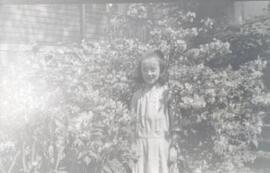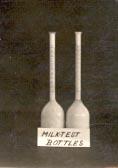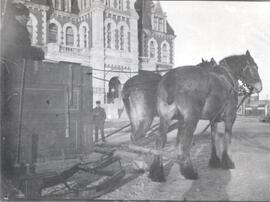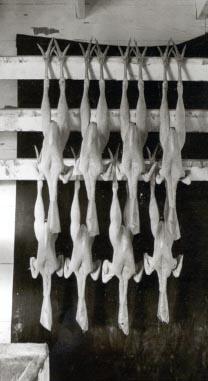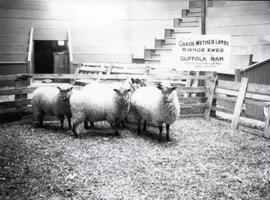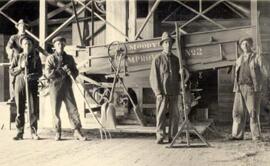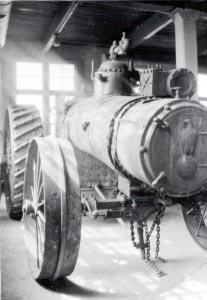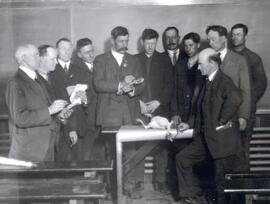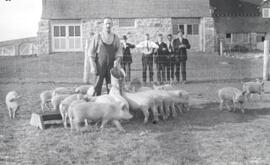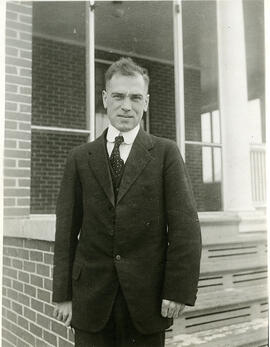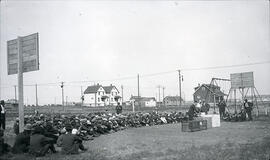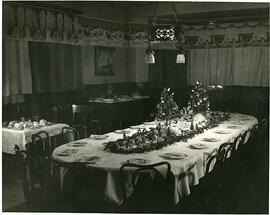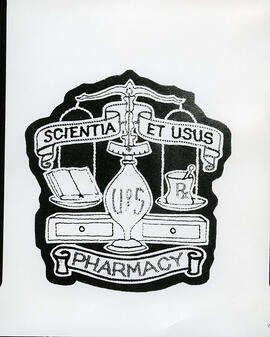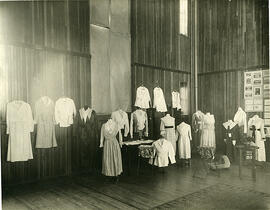- A-5602
- Item
- [191-?]
Jean E. Murray standing in some bushes at the side of a house; stairs in background.
Bio/Historical Note: Jean Elizabeth Murray was born on 29 April 1901 in Halifax, Nova Scotia, the second of three daughters of Walter Charles and Christina (Cameron) Murray. In September 1909, Murray, her sisters, and her mother moved to Saskatoon, Saskatchewan to join her father who had been made president of the University of Saskatchewan a year earlier. She completed her primary and secondary education at King Edward and Victoria schools and Nutana Collegiate and then went on to earn a Bachelor of Arts (1922) and a Master of Arts (1923) from the University of Saskatchewan. She subsequently received a second MA from the University of Toronto (1924) and a PhD from the University of Chicago (1936). After working as an instructor at the University of Alberta between 1928 and 1930 and at Regina College from 1930 to 1931, Murray joined the University of Saskatchewan as an instructor in history in 1931. She became an assistant professor in 1937 and a full professor in 1966. Upon her retirement in 1968, the University of Saskatchewan awarded Murray the rank of Professor Emeritus of History. After retirement she continued to work at the university, first as a sessional lecturer, then as chairman of the library committee of the history department. She was made acting archivist for the university in 1936, and was a leading member of several women's interest groups. Murray died at Saskatoon in 1981.



